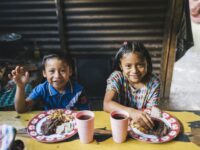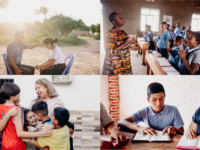In one of my visits to a Child Survival Program beneficiary’s home, she talked about some of her experiences, hopes, challenges, and trials.
She told us that her husband worked as a shoeshine, and many times he disappeared for weeks. When he finally came home, he returned without money, drugged and drunk, and would hit her.
She told this to her Child Survival Program implementer when she joined the program, and two implementers decided to talk with her husband about it. The situation is changing for this family, not dramatically as we would like, but there is a light at the end of the tunnel.

At one of her lowest points, the woman in this story went out to the street, crying and frustrated because of her fate. Her husband was not at home, she didn’t have money to buy food, and it was her daughter’s birthday.
While she walked along the dusty street in the glowing sun, sobbing with her head down, she heard a familiar voice: “Oh, good morning sister.” It was the implementer, who told her, “God bless you!” The woman told the implementer of her frustration and pain over not being able to offer her child something on this special day.
As the woman shared her tragedy through her tears, the implementer handed her the plastic bag that was in her hand. Inside was a chicken, ready to be cooked.
I had the opportunity to talk with the implementer, and she told me that she had planned to eat that chicken with her daughter for the next two days. Instead, she gave it away. This is love in action.
If I speak in the tongues of men or of angels, but do not have love, I am only a resounding gong or a clanging cymbal. —1 Corinthians 13:1, NIV
Prayer: Lord, we pray for the Child Survival Program implementers, who are making a great difference, just like the early church.

ABOUT THE AUTHOR: Mario Vasquez Sanchez serves as the Country Director for Compassion Bolivia.
Read all the One in Spirit devotionals.







3 Comments |Add a comment
Love is some times sacrifice, that the implementer sacrificed her own meal for 2 days to show love to this lady is simply takes a heart of sacrifice n can never be forgotten by this family and God himeself.
This is loving the Jesus way, that he took on the pain for us to receive life. Letting go of a shopping bag to save life is indeed true love.
It’s really inspiring. Whenever we say that we care for others, than we must also show that caring through our action too 🙂